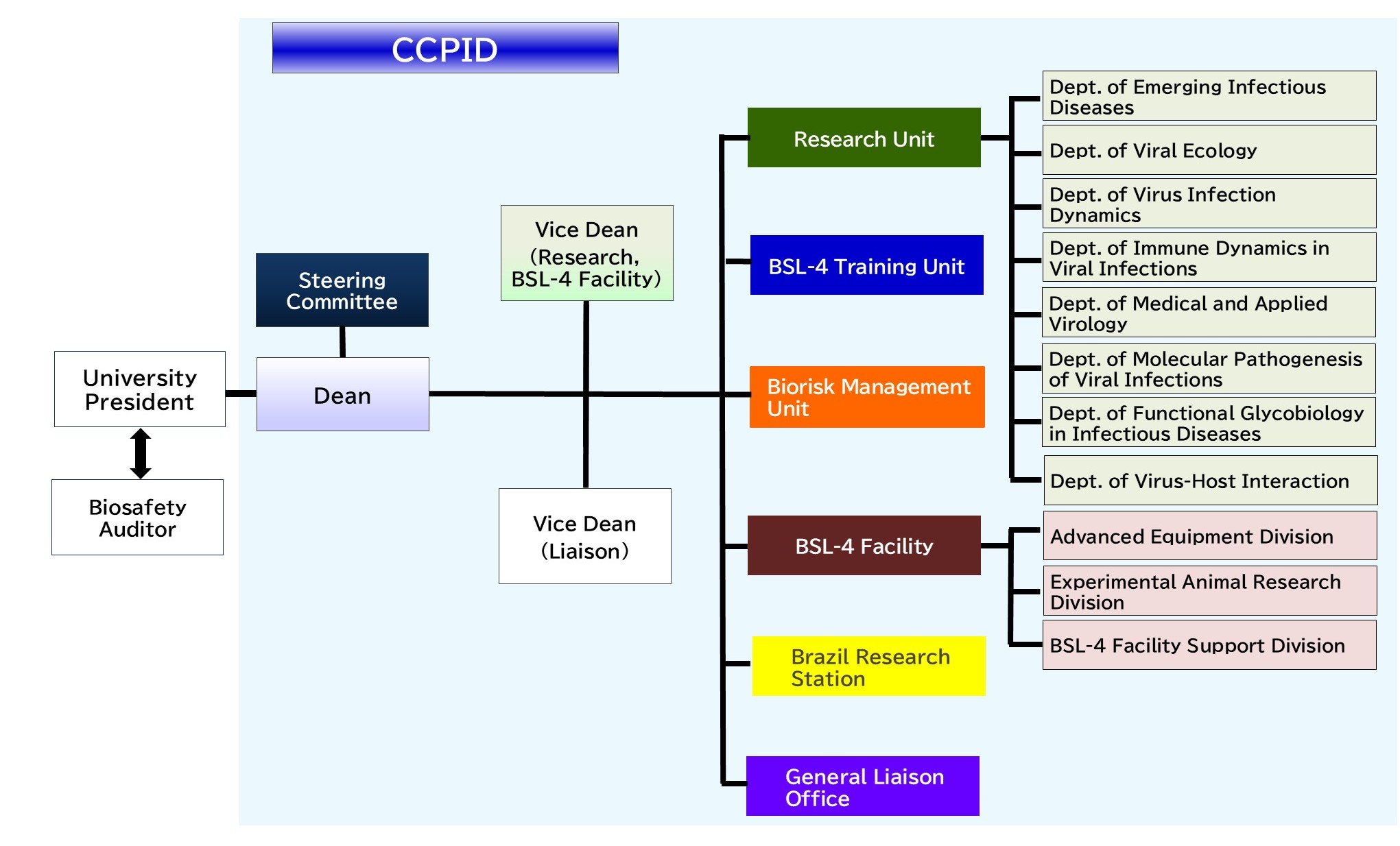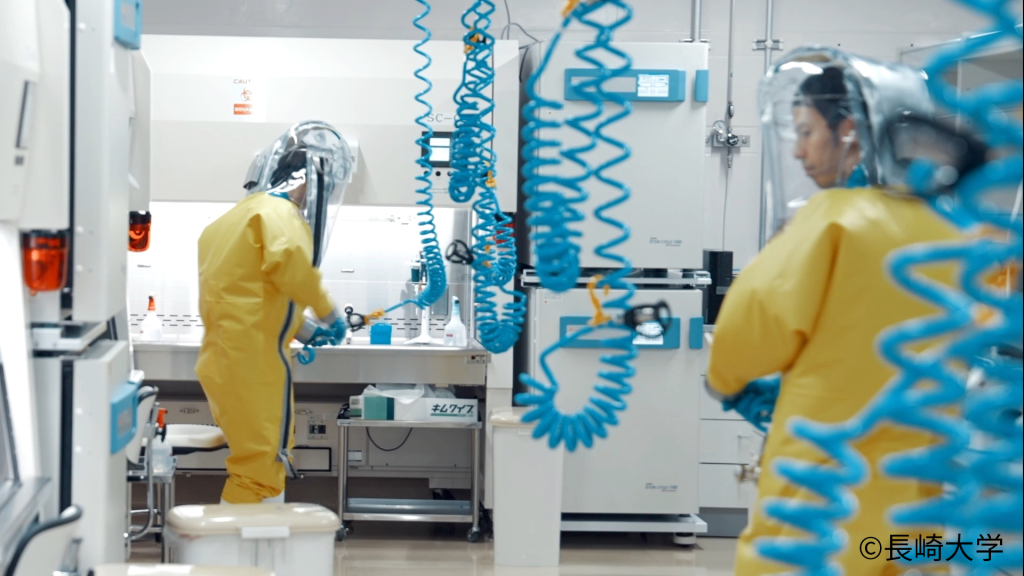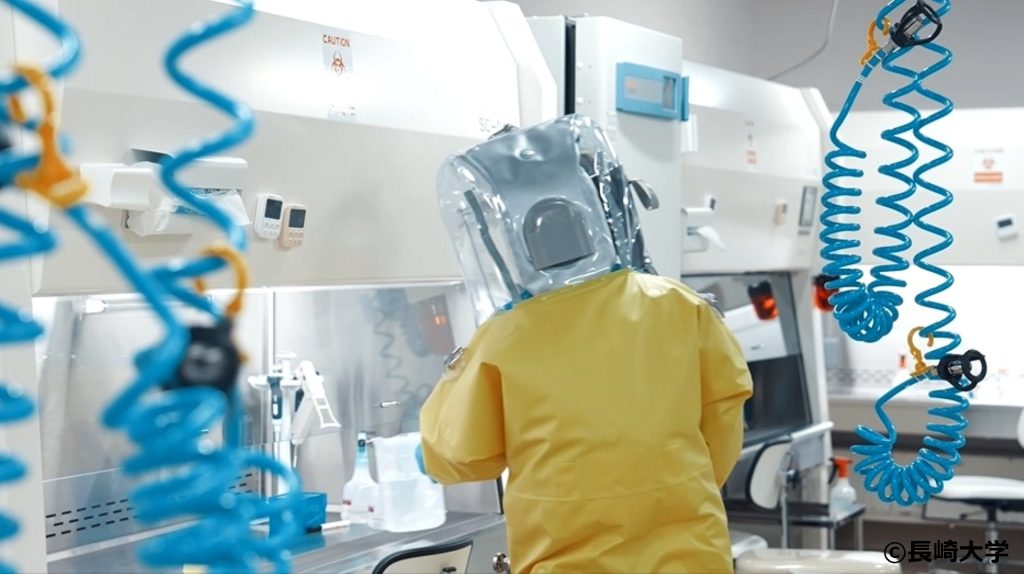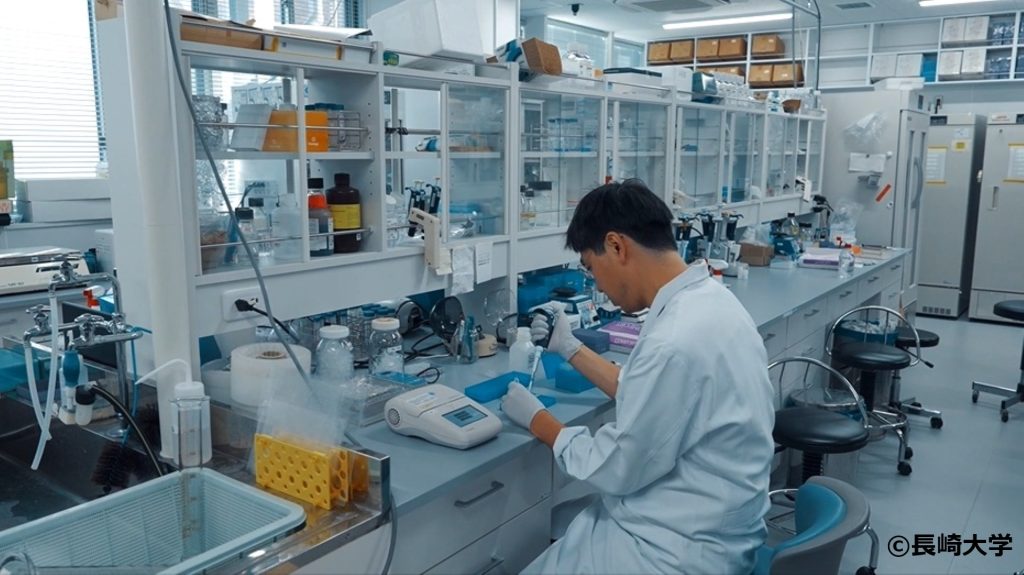What is the National Research Center for the Control and Prevention of Infectious Diseases(CCPID), Nagasaki University
Mission Statement Infectious diseases pose a serious threat not only to human life and health but also to the stability of economic and social systems. |
The Center has its origins in the research base for infectious disease, which was established in 2017, and when it became an independent department as a University Research Institute of Nagasaki University in April 2022, it was renamed the “National Research Center for the Control and Prevention of Infectious Diseases(CCPID)”. It has also been certified by the Ministry of Education, Culture, Sports, Science and Technology(MEXT) as a “Research Center for emerging infectious diseases” for joint usage / research by related researchers nationwide.
We will promote collaboration with research institutions in other countries that have BSL-4 facilities, and support research activities using BSL-4 facilities by related researchers throughout Japan.
The above two photos can only be used for the purpose of introducing the university's BSL-4 facility.
When using them, please refrain from cropping or altering the photos.
**********
Note : The narration for these videos was created using “ondoku3.com”.
Message from the Dean
Organization

Click here to go to the home page.↓
History
| 2006-2008 | “Research and Study on Countermeasures for Emerging Infectious Diseases that Require Advanced Safety Laboratories (BSL-4) Facilities” was conducted with Special Coordination Funds for Promoting Science and Technology |
| May 2010 | The president's message announced that Nagasaki University would begin considering the establishment of a BSL-4 facility. |
| July 2015 | Nagasaki Prefecture, Nagasaki City, and Nagasaki University concluded a basic agreement on the establishment of a research base for infectious diseases. |
| November 2016 | The 14 economic or medical organizations submitted a request on a BSL-4 facility to Nagasaki Prefecture and Nagasaki City. |
| November 2016 | At a Ministerial Meeting, it was decided to proceed with the plan to establish a BSL-4 facility at Nagasaki University as a national policy, and to provide support for Nagasaki University as “the government’s involvement”. |
| November 2016 | The governor of Nagasaki Prefecture and the mayor of Nagasaki City agreed to cooperate in the realization of the Nagasaki University's facility development plan. |
| September 2017 | “Basic Concept for a Highly Safe Laboratory (BSL-4) Facility to be the Core of the Research Base for Infectious Diseases in Nagasaki University was formulated and published. |
| January 2019 | Construction of the BSL-4 facility (laboratory building) began |
| July 2021 | Completion of BSL-4 facility (laboratory building) |
| March 2022 | Completion of the main building of the National Research Center for the Control and Prevention of Infectious Diseases(CCPID) |
| April 2022 | The National Research Center for the Control and Prevention of Infectious Diseases (CCPID) as a University Research Institute was established. |
| April 2022 | Certified as the Joint Usage / Research Center for emerging infectious diseases(April 2022-March 2028) by the Ministry of Education, Culture, Sports, Science and Technology (MEXT) |
| October 2022 | One of the synergy centers (planned for FY2022-FY2026)for the “Strategic Center of Biomedical Advanced Vaccine Research and Development for Preparedness and Response (SCARDA)” the project of the Japan Agency for Medical Research and Development (AMED) has been established in DEJIMA Infectious Disease Research Alliance, which CCPID is a part of. |
| January 2025 | The BSL-4 facility was designated by the Minister of Health, Labor and Welfare as a Facility for Possessing Specified Class I Pathogens, etc., based on the Act on the Prevention of Infectious Diseases and Medical Care for Patients with Infectious Diseases (the Infectious Diseases Control Law). |





